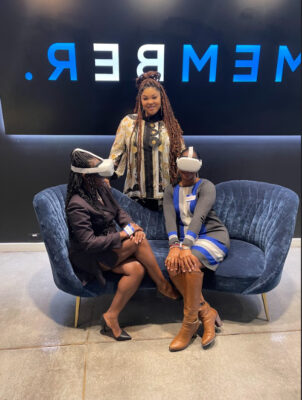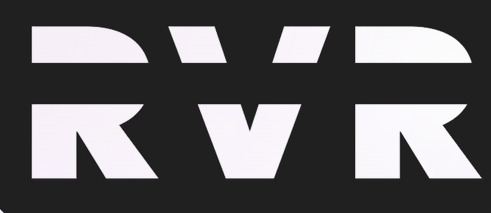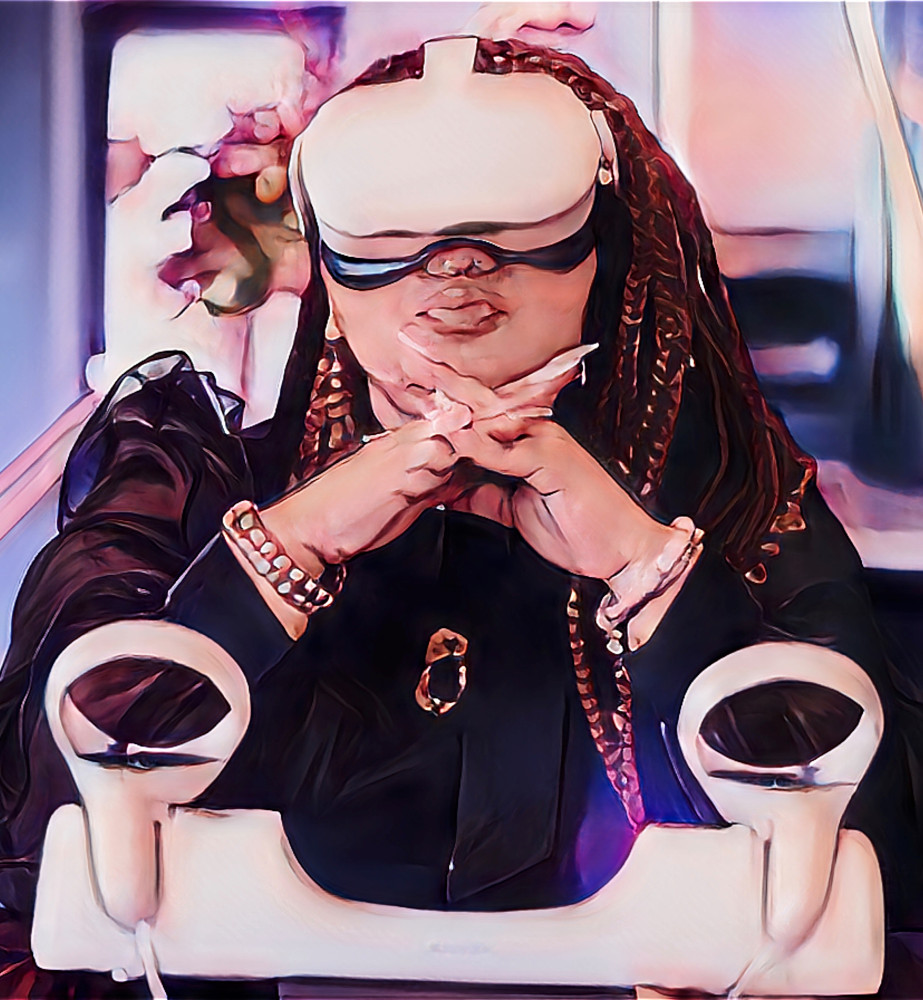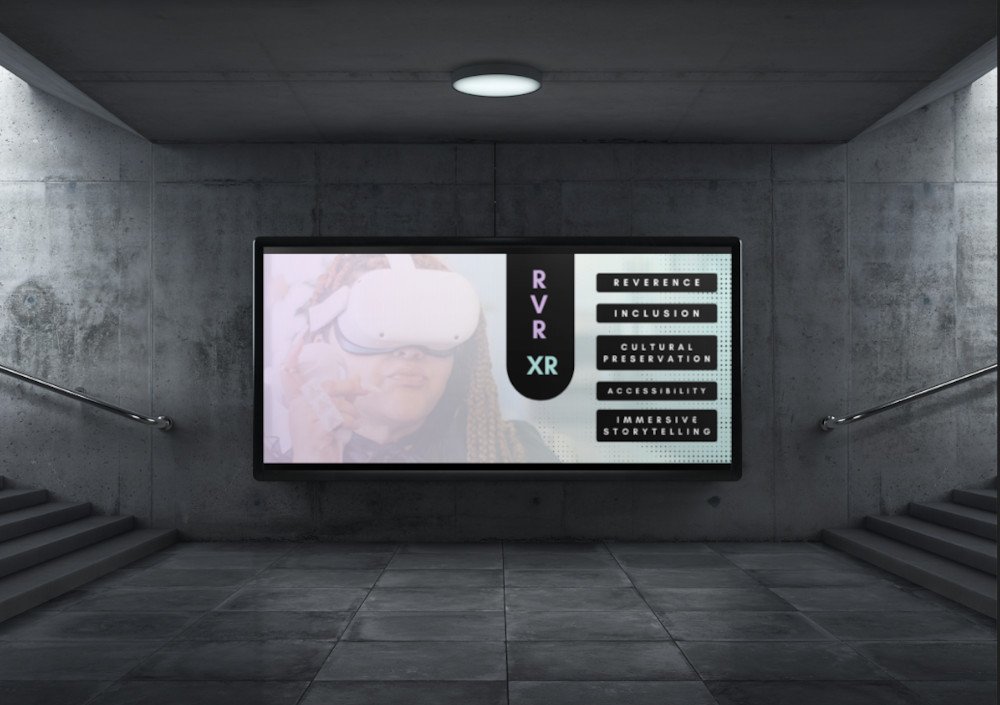VR Music: Preserving Legacies, Creating Audio Opportunities
This media entrepreneur is reimagining music history with VR.
Where do VR music, audio storytelling, and an “inclusion architect” intersect?
It all comes together at RevereXR, an immersive storytelling production company. Founder Yolanda Barton launched RevereXR for the best possible reason: She saw an urgent need. The rich musical legacies of key cities and communities were slipping away – but she knew the right technology could preserve it.
While Barton was a PhD student at the University of Washington in 2019, she realized the unique power of virtual reality (VR) as an impactful way to preserve the sonic history of her native Seattle. She was concerned about changes in her community due to gentrification — and the subsequent loss of music legacies.
Rather than wring her hands, Barton produced Central District, an immersive journey for the Oculus Quest through that famed Seattle neighborhood’s musical history. Audio interviews with landmark local musicians converge with a time-travel recreation of the Central District’s past streets and spaces, giving the user a fresh perspective on local music history.
Now Atlanta-based, Barton is building out RevereXR’s content to cover many more cities, in the U.S. and worldwide. She’s not just a finalist for the Oculus Launch Pad program that supports promising VR content creators from diverse backgrounds, but #1 on the leaderboard. Equipped with a vision for VR to help build communities, RevereXR is using VR and augmented reality (AR) to bring history to life.
Barton’s inspirational transformation into a VR content creator shows there’s no experience necessary for pivoting to immersive technology – purpose and drive can take you there. RevereXR’s growth also points to just one aspect of the huge opportunity for audio engineers in VR. This Q&A with Barton takes you on a tour through tech entrepreneurship, and hopefully gives you new ideas for audio careers in VR.
There’s deep meaning in your company’s name. Why did you name it Revere?
Revere brings reverence to the field of VR. It demonstrates what I feel is missing or lacking in tech, which was reverence. And I think that’s why a lot of communities and certain groups feel like technology isn’t for the betterment of humanity and that turns people off. But if we have respect for the people that came before us, if we’re honoring those that have laid footprints before us, if we’re honoring the past lessons, if we’re grounded in where we came from and really chart a course, then we are more focused on how technology creates positive influences in people’s lives.
It really can facilitate positive human interactions. It’s about the way that we use technology, and I really wanted my tech journey to be something different and for it to be about what I’m honoring. That’s history and music legacies and people that have helped create connections and build communities. We can let technology be a part of that building process.
What was the inspiration for Central District, your first major VR/AR project in Seattle? Tell us how that unfolded.
My first VR/AR project and my biggest inspiration was trying to solve a dilemma in my own community. I’m born and raised in Seattle, Washington. I’ve lived in the South end, but the Central District was my primary upcoming. I watched my grandparents get dressed and put on wigs and pearls and fur coats to go see live music, and I heard stories that seemed out of this world, like a 15 year-old kid who could play the piano, a blind man who could play the piano. All these amazing things. They were happening in my neighborhood, and it wasn’t just local musicians.
My neighborhood birthed actual music legacies that shaped music around the world. We’re talking about Quincy Jones and Ernestine Anderson, and Ray Charles launched his career in my neighborhood. Jimi Hendrix was born there. Kurt Cobain, born and raised.
But the reality of it is, after leaving for seven years and coming back and seeing what gentrification did to my neighborhood, it made me see how easily we were erased and how urgent it was that we collect that history. My biggest fear was, “How are grandkids of people born and raised in this neighborhood who experienced this history, who lived it, who contributed it, how are those future generations going to access this history? They’ll just flat out never know it happened.”
That feels like a crime, that literally feels like we’re losing some of music’s most priceless moments. So even musicians today – you have a concert now it’s in the past and it’s in some archives somewhere eventually. We should be sharing these moments by preserving them with immersive technology.
Starting Virtual Construction
A lot of SonicScoop’s audience probably isn’t familiar with what you technically have to do to build something in VR. How does that work?
Well, I and most of the audience have something in common because I didn’t know how to do it either! This process is what taught me. I’m not from a tech background. I am not a developer, a coder, a builder, or a programmer. But I have vision. I’m learning the industry by creating in the process.
I sought out an internship with a virtual reality company called Futurist in Atlanta, Georgia. I wanted to learn more about what it took to build, I learned a lot, and then I built a team. We used software programs like Unity and Blender and Maya, where we recreated the neighborhood and we’ve just been building on top of buildings.
So we built the (virtual) neighborhood, then we built the landmarks, and then we put up a mural that houses the music legacies. Then we decided to add historic businesses to that neighborhood. Now what essentially is the preservation of music and the neighborhoods that give birth to music has made the neighborhood the character. What goes along with that neighborhood is the history of what took place there, what presently is happening there and the future. So we’re bridging the past, present, and future around music. It’s awesome.
How does someone experience this – is it by putting on an Oculus headset?
A number of ways. We will be released direct to consumer so that anyone who has an account will be able to download it onto their headsets for a fee. There will be community events, we’re going to be working with museums to create immersive mixed reality exhibits, and offer our content as history curriculum to education institutions.

Yolanda Barton (center) at an event. Introducing people to the VR experience is one of RevereXR’s primary missions.
We want to take Van Gogh and say, “Now let’s do that about music history, and let’s include physical artifacts that the music legacies owned, and let’s include their history and make some physical artifacts and immersive installations too.”
That’s the future of being able to experience it, because if you don’t have a headset at home, it may not be as accessible. But RevereXR is about accessibility, so the way we can ensure that families, music fans, history lovers, tech enthusiasts, museum lovers, and schools will be able to experience it is by going to those exhibits.
What were some surprising outcomes from the Central District project? Tell me about the challenges and the opportunities that emerged as it unfolded.
We can start with the challenges. Again, I’m not trained in tech, so everything was a challenge! Being an Oculus launchpad was a great experience, but I also felt like a fish out of water because I’m not a developer. And there was a lot of that language and tone and the interactions was really supporting that development community. Most of the people that get that opportunity have already done something in tech where I just had a vision and it was up to me to create it and bring it to reality.
What I heard from them regularly is, “No one’s building what you’re building.” This is what developers dream of: Having fun and enjoying their work and being able to push the boundaries and create something that’s new. I carved my own lane and I call it XR preservation — RevereXR specializes in XR preservation and storytelling.
I had to really push myself to make sure I was learning at the speed that I was asking my developers to be building too, because I’m learning from every conversation and I’m finding ways to bring that vision to life through their work. It’s constant interaction nonstop.
But like I said, we made it fun and I really allowed it to be a journey. Now this is all I want to do. I want to do it every day, uncovering all the cities that house music history and history that needs to be preserved like New Orleans, New York, Motown, LA, Liverpool and in Africa – we want to go all over the world.
Audio for VR: Impact and Opportunities
From an audio standpoint, what can audio engineers learn from your experience assembling these virtual tours?
Audio makes such a difference in the experience. We’re talking music, but we’re also talking oral tradition. A lot of people don’t realize it, but we had to put a lot of thought, time, and energy into introducing storytelling to this experience. How do we access those with living history and collect their audio now? That’s an urgent need. The musicians, those that were a part of the music legacies experiences, those are the audio stories we need to be collecting now.
I do have an audio engineer that helps me with this, thank goodness. There are requirements we had to meet for Oculus and audio is an important part of those requirements. It helps to stay aware of what industry level trends are. But it also is something that I’m looking to explore even more and push those boundaries as well. Who out there wants to do something new and innovative with audio? Because right now we’re experiencing the music history, we’re hearing stories from storytellers and audio is an important part of delivering that experience[.
I have three years worth of audio interviews from elders and musicians and storytellers who lived that music history. What do we do with them? The real opportunity for people listening or reading this article is exploring: How do you want to see this audio be interweaved and immersive tech experiences, in museum experiences, and ins schools because it would be a shame to let all these stories just disappear.
You had to meet some minimum standards for Oculus. Tell me a little about the audio infrastructure that was required.
I hired someone to manage it because I knew it was was imperative to have a dedicated person. I have had to work with audio engineers. We have storytellers in-booth every other day providing history for some of the landmarks and seeing the history of the neighborhood. We chose to use a professional booth because we need a quality sound and then interweave that in the experience.
What’s great is the Oculus Quest 2 and the new Pro Quest has great audio sound in the headsets. But I did have to seek someone out to help me understand how we make the most of it because we can’t just use any old audio. We want the best quality audio to optimize the music history in the headset for our viewers. If any of the audio engineers reading this have any ideas with what to do with all my audio interviews, they should definitely get in touch with me.
VR, AR, and Inclusion
Why is VR and AR your medium of choice for the stories that you’re telling? What makes it a superior format and what might its limitations be?
Right now is when we have the opportunity to use this technology to preserve the history. We can keep doing documentaries, we can read books, but you know that future generations are already looking to this technology.
We already know that in the future, XR is going to be playing a significant role in the classroom. We already know that that industry is going to continue to grow beyond just games, but in education, in music and museums and so much more. We’re looking at a $500 billion industry in the next few years. We know it’s happening at some point. There’s a reason that people are investing in this future.
And here’s the thing: Yes, we can read about it and we can watch documentaries. That’s how I grew up. But if you gave my grandparents or my parents, or even me, and future generations the opportunity to experience it and interact with it, that’s experiential learning – that’s priceless. That’s something that we can bond around. We can create global communities around experiencing music history.
XR and VR is my tool because it’s immersive. We can simulate and recreate any environment. Now I can be in it, I can be surrounded by it, I can touch it in the headset, I can really hear it and be immersed in it. This brings your imagination to life. We can have living experiential history, and we can do it now. So why would we wait?
Finally, what role does your work with RevereXR play when it comes to the future of inclusion and technology?
As someone who’s been a Diversity, Equity, and Inclusion (DEI) speaker and consultant for eight years, I’ve helped a lot of organizations with leadership, recruitment, and workplace culture.
But this is an opportunity to weave inclusion into tech. What I mean by that is creating a sense of belonging where people do not traditionally belong. These stories, this history is inclusive in essence because these are communities that are being erased. These are places that are losing their voice and have no medium to secure their history. The Central District, for example, was a Black community in Seattle, the history of jazz in Harlem, the history of Los Angeles, New York and New Orleans. These are stories and voices of marginalized communities that birthed the music.
While we want to do everyone’s (legacy), we want to make sure that we’re paying homage to music legacies that are being erased. If the world didn’t know Quincy Jones, what would the world be? If the world didn’t know Jimi Hendrix, what would it be? If the world didn’t know Bruce Lee from my neighborhood too, what would the world be?
Let’s preserve what’s urgently vanishing and at risk of being removed and let’s document it, but let’s celebrate all of it. By saying, let’s celebrate all of it, that means including those that are underserved and overlooked. This reconnects me to kids who are saying, “My grandparents were born and raised in the Central District.” I don’t live there. But it’s so amazing to experience their history when we put on this headset. That’s inclusion.
Thinking about people who may have no other way to reconnect to their past – that’s inclusion. Using the stories and the music legacies because music is diverse, music is inclusive, good music is just good music. Our music legacies represent the rainbow of cultures that have contributed to art, music, and culture in our world. By preserving those, we’re telling stories of every culture.
— David Weiss is an Editor for SonicScoop.com, and has been covering pro audio developments for over 20 years. He is also the co-author of the music industry’s leading textbook on synch licensing, “Music Supervision, 2nd Edition: The Complete Guide to Selecting Music for Movies, TV, Games & New Media.” Email: david@sonicscoop.com
Please note: When you buy products through links on this page, we may earn an affiliate commission.









[…] Source link […]